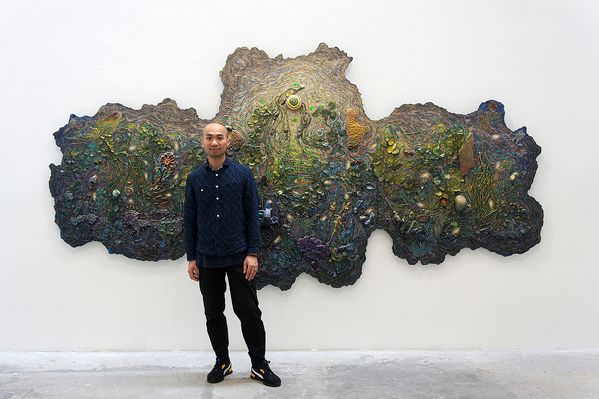Ye Qin Zhu with his painting, All Seeing, All Feeling, All Being, All Changing, 2021. © Photograph by Max Popov.
This month in New York, PhillipsX presents the selling exhibition ‘Dialogues’ in partnership with The Here & There Collective (THAT Co.). Co-founded by Steven Abraham and Lisa Young, with Claire Kim as Director of Curatorial Affairs, THAT Co. is a non-profit organization that highlights and supports artists from the Asian diaspora.
Here, we speak with four young artists whose work is featured in the exhibition. They’ve each benefitted from THAT Co.’s Studio Grant, which offers early-career artists six months of studio access alongside tailored public programming and critical documentation of their practice.
Dialogues is on view at 432 Park Ave from 5–22 September.
Justin Rui Han
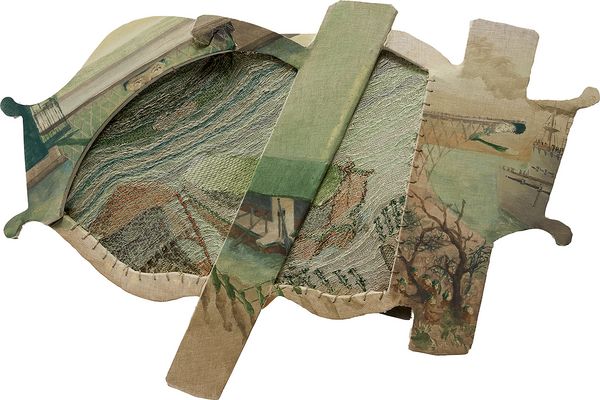
Justin Rui Han, Retracted Permissions, 2024. Dialogues: PhillipsX + The Here & There Co.
PHILLIPS: What can you tell us about your work in the exhibition?
JUSTIN RUI HAN: Both works began as responses to political and satirical cartoons, images I saved while browsing nationalist periodicals belonging to a few historical contexts. For Retracted Permissions, I borrowed a pair of isolationist, anti-imperialist cartoons from the Ottoman journal Kalem (1908–11), wanting to see how their indignation would translate into paint and textile forms. I wondered if the discontent they captured might resonate beyond that specific time and nation-state.
In Kegresse and Altimeter, I entangle two instruments with military and scientific applications. One is the Citroen-engineered Kégresse track, a technology marketed in the questionably named transnational campaign La Croisière Jaune (The Yellow Cruise, 1931–2). I encountered documentary footage of the expedition while researching my great-grandfather, a Beijing-based archaeologist, who took part in a Chinese-Swedish research project for which there is similar documentation. Flipping through digitized pages of the Egyptian magazine al-Musawwar (1925–present), I ran into the Kégresse track again, this time piloted by an Egyptian prince adventuring in the Sahara. The coincidence excited and unsettled me. This work belongs to a general theme I've become interested in — how a technical apparatus can transform land and place into impersonal data or metrics for future domination.

Portrait of Justin Rui Han in his Brooklyn studio, 2023. © Justin Rui Han Studio.
P: What’s your process like? How do you typically begin making a work?
JRH: Lately, I've tried to begin with materials outside of the oil on canvas that I am most familiar with — wool, silk, cotton, wood; in future projects, metals, sound, and electronics. I tap into specific historical circumstances and accompanying imagery to build pictorial and sculptural systems; networks that witness and echo the research. I still think of this as a very image-driven practice with a different beginning than an authoritative drawing. This gives me more chances to employ experiential unknowns, which I find a discipline-loyal approach can sometimes foreclose.
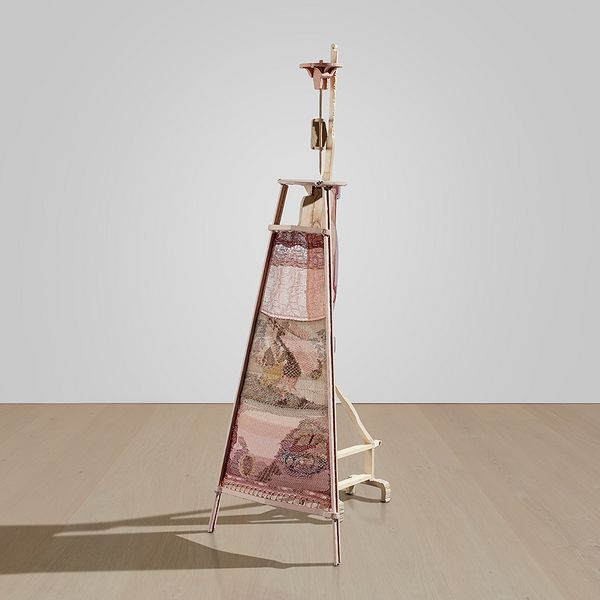
Justin Rui Han, Kegresse and Altimeter, 2024. Dialogues: PhillipsX + The Here & There Co.
P: How did you become involved with THAT Co., and how has the collective impacted your creative outlook?
JRH: I knew of THAT's programming before I applied for the residency and appreciated its range and its focus on peers and contemporaries. It's one of the first coherent artistic communities that I've been part of since leaving school, and I'm grateful to Steven, Lisa, and Claire for introducing me to artists who have maintained committed practices in New York City for years or decades. I knew I wanted the residency to be an opportunity to take risks, explore a wider range of media, and follow through on propositions that I looked to establish when painting. That promise to myself remains an open one, which I hope I can continue to fulfill in the next year.
Anna Ting Möller
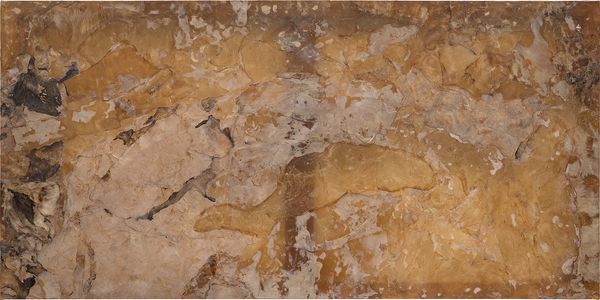
Anna Ting Möller, Calleth you, Cometh I, 2023. Dialogues: PhillipsX + The Here & There Co.
PHILLIPS: What can you tell us about your work in the exhibition?
ANNA TING MÖLLER: The title Calleth You Cometh I carries a sentimental resonance and is borrowed from a glam rock song from the early 2000s by a local Swedish band, which frequently played on the radio. During childhood, my mother and I would listen to the radio station while driving to the grocery store, often singing along to our favorite tracks. On occasion, if “Calleth You Cometh I” played, my mother would keep the engine running, continuing to sing along even after we had finished our errands.
Years later, while hiking in the mountains of China, the song unexpectedly appeared in my playlist. Its familiar melody amplified the memory of that moment, leaving the view from the hike indelibly imprinted in my mind. The artwork captures this memory, reflecting both the landscape and the sentimental experience.
Bone 1–3 is an integral component of a larger body of work. Bones, known for their strength and resilience, are resistant to burning and nearly impossible to pulverize, symbolizing an indestructible force. However, with age, bones can become brittle and delicate and can tinkle like glass. This contrast serves as a reminder of the underlying emotions and experiences that, while intangible, affect life. The pieces in this series evoke the sense of what is felt but not visibly apparent.
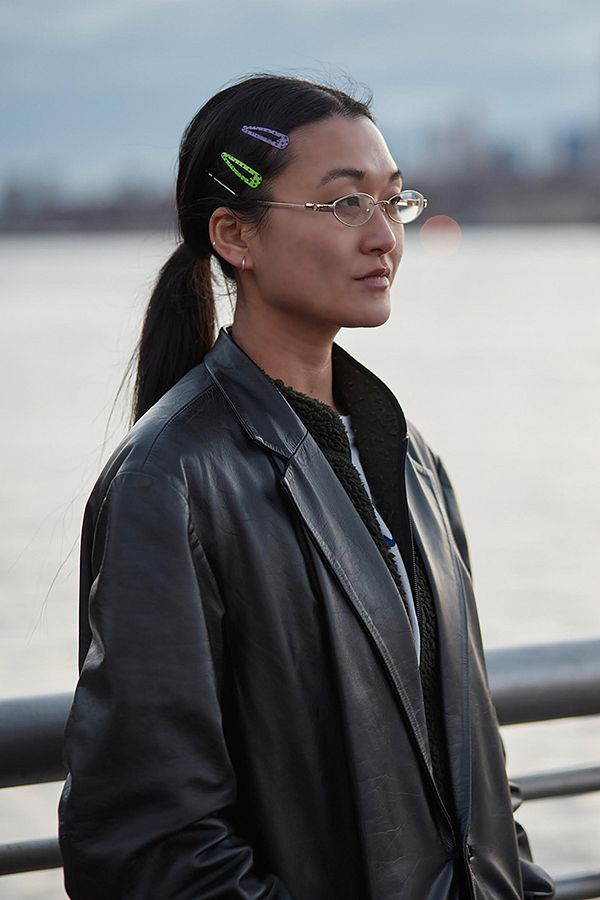
Portrait of Anna Ting Möller, January 2024. © Photograph by Paul Rho.
P: What’s your process like? How do you typically begin making a work?
ATM: The experience varies each time, often appearing quite random. Typically, I find myself seated on something that moves — whether it be a car, train, or bus. This recurring pattern is significant. Given my tendency toward anxiety, I find it challenging to slow down unless I am physically anchored in a particular place. I am working to improve this and to cultivate a sense of tranquility in my life. Nevertheless, I am uncertain about whether I genuinely wish to fully explore and understand all the ideas that might emerge.
The process begins with cultivating a kombucha culture in a large vat, using tea and sugar to facilitate fermentation. This process serves as a form of domestication and explores kombucha as a corporeal potential and follows a material logic. The sculptures produced are ephemeral and constantly morphing. Conceptually, the focus lies on utilizing a single kombucha mother culture to establish a lineage of offspring, deriving from a single mother source.
The sculptures themselves are living entities, evolving in appearance over time. Although it is theoretically possible to return these sculptures to the mother culture, the risk of contamination is significant. This method emphasizes the relationship between the two entities, representing an intimidating collapse between self and other.

Left: Anna Ting Möller, Bone 3, 2024. Right: Anna Ting Möller, Bone 3 (detail), 2024. Dialogues: PhillipsX + The Here & There Co.
P: How did you become involved with THAT Co., and how has the collective impacted your creative outlook?
ATM: During my MFA studies, a fellow cohort member recommended that I look into the work of Claire Kim, which led me to discover her contributions to the field. I subsequently invited Claire, as well as Steven and Lisa, for studio visits. I dedicated time to attending their exhibitions and events, which enriched my understanding of their organization. When the open call for the studio program was announced, I applied, hoping for the best. And it turned out to be a great experience!
Transitioning from graduate school to the studio program was such a meaningful experience that it is difficult to fully articulate. Being granted studio space allowed me to take myself seriously as an artist in New York and advanced my practice. Additionally, meeting and interacting with the professionals affiliated with The Here and There Collective was an invaluable opportunity for growth and inspiration.
Huidi Xiang
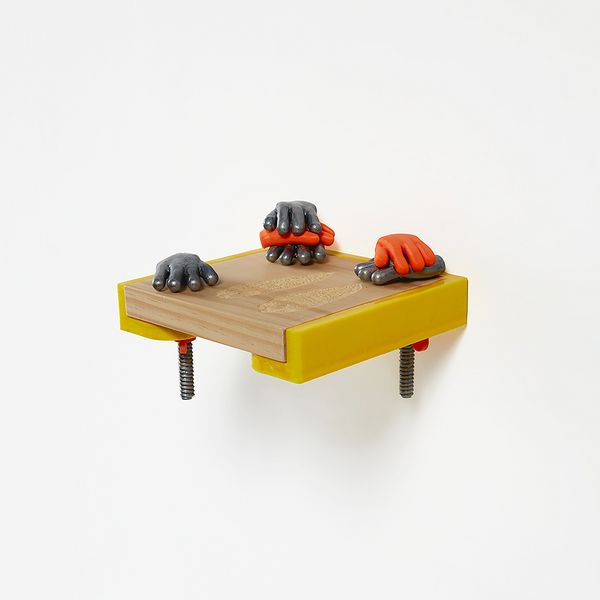
Huidi Xiang, eye print #4, 2024. Dialogues: PhillipsX + The Here & There Co.
PHILLIPS: What can you tell us about your work in the exhibition?
HUIDI XIANG: All the pieces included in this exhibition are newly created this year and have never been shown before. They emerge from a new body of work inspired by my fascination with the predator characters from the golden age of American cartoon animations, such as Wile E. Coyote from Looney Tunes and Tom the Cat from Tom and Jerry. These characters, despite their viciousness, are always outsmarted by their prey, constantly failing, stumbling, and making fools of themselves. Their exaggerated expressions, particularly their eyes, reveal a complex interplay of desire, fear, and anxiety, offering a nuanced portrayal of power dynamics that captivates me. This body of work seeks to explore and reflect on the intensity and subtlety of these depictions, inviting viewers to question who the real predators and prey are — or if we, too, are part of this dynamic.
I also developed a new set of hardware specifically for this series to secure the pieces in place. The “hand on hand on hand...” screws and clamps were inspired by a scene from Woody Woodpecker, where the character struggles with an officer while stamping paperwork to renew his driver’s license. The emotional and physical tension depicted in this scene fascinated me, leading me to reimagine it as functional pieces of hardware that physically exert force and tension.
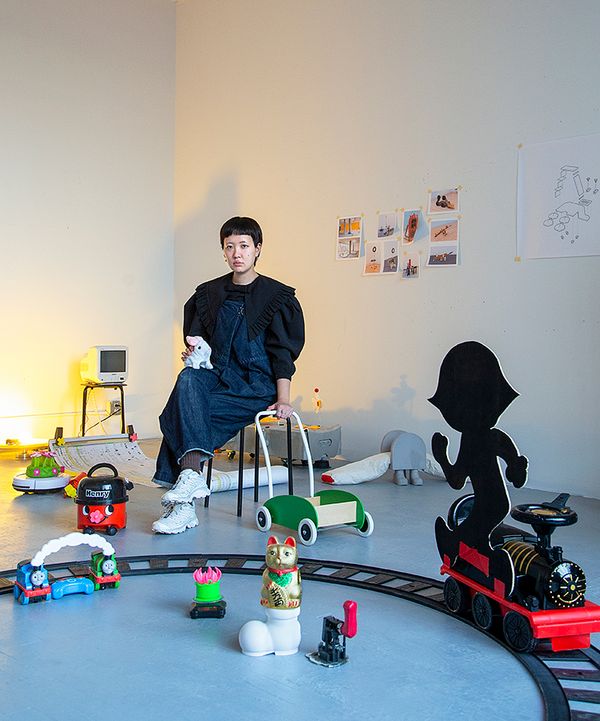
Portrait of Huidi Xiang in her studio, 2023. © Huidi Xiang.
P: What’s your process like? How do you typically begin making a work?
HX: My current work typically begins with an exploration of particular experiences or emotions related to late capitalism that “trouble” me. I then delve into related pop cultural products or phenomena, reimagining and recreating elements of them to craft new, alternative narratives that reflect my explorations. Growing up immersed in pop media, I have naturally adopted it as my artistic vocabulary. I aim to use the very language of capitalism to unpack and disrupt the singular narratives it imposes.
My making process combines digital fabrication with hand-making and finishing techniques. I usually start by drafting objects in digital modeling software and then bring them to life using machines like 3D printers. As I continue sculpting in the physical world, I simultaneously update the digital model. This approach allows the digital and physical objects to evolve together without a strict before-and-after relationship, growing in tandem as the sculpting progresses.
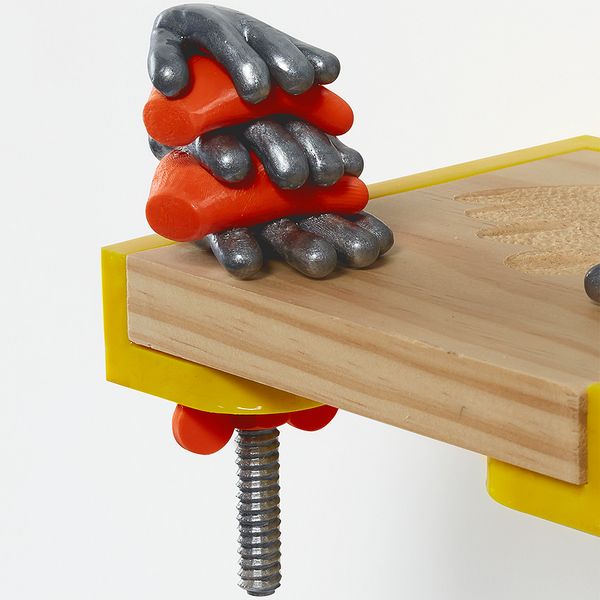
Huidi Xiang, eye print #1 (detail), 2024. Dialogues: PhillipsX + The Here & There Co.
P: How did you become involved with THAT Co., and how has the collective impacted your creative outlook?
HX: I first became involved with THAT Co. when I applied for their studio residency program open call, which led to an incredible opportunity to become a resident. At the time, I had just moved to New York for a little while, and the support from THAT Co. was instrumental in helping me establish and grow my practice in this new environment. Being part of THAT Co. has immersed me in a community that is not only supportive and caring but also profoundly inspiring, greatly enriching my practice.
Ye Qin Zhu
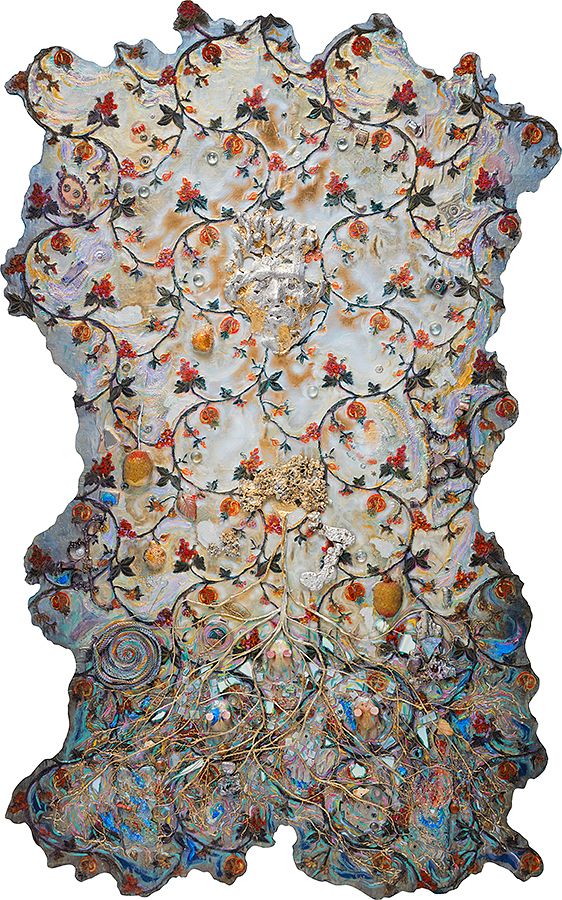
Ye Qin Zhu, Dharma Flywheel, 2024. Dialogues: PhillipsX + The Here & There Co.
PHILLIPS: What can you tell us about your work in the exhibition?
YE QIN ZHU: Inspired by my experiences with art in religious spaces, I am interested in the power of scale to influence the viewer’s body, allowing the artwork to unite the effects of architecture, storytelling, and iconography. I make relief paintings because reliefs not only create a picture plane, they influence the architecture they’re in. And because they are dimensional, they probe the notion of felt knowledge, beginning with how the physical world comes through the senses of touch and sight.
I look to spaces of worship to learn how knowledge and worldviews can be transmitted through visual experiences, physical objects, and spaces. I integrate their lessons to share ideas on the porous nature of mind, matter, body, and spirit. In this way, my relief-paintings examine how beliefs can travel and materialize between objects and people.
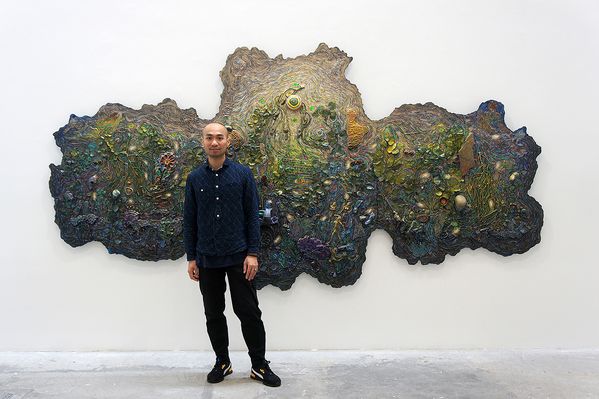
Ye Qin Zhu with his painting, All Seeing, All Feeling, All Being, All Changing, 2021. © Photograph by Max Popov.
P: What’s your process like? How do you typically begin making a work?
YQZ: Civilization and nature clashing informs my aesthetic. Themes of gardening feature heavily in my work. I grew up spending a lot of time in a vegetable garden in the cosmopolitan neighborhood of Sunset Park, Brooklyn. My parents were farmers born in Taishan, China, in villages not far from Shenzhen city, when industry was taking root over four decades ago. I learned from my mother how to plant, cultivate, and harvest crops in our backyard. I tend to my art like a garden. Paintings get started, seeds get planted, some take root, while others take years to mature. The works take on a life of their own, carrying on them images, objects, and stories that become the fruits of the pieces. Organic fibers like stems, roots, seed pods, and leaves get embalmed and glued next to microchips, plastics, and detritus. Like dense vegetation, my works often appear overflowing and become relief-like.
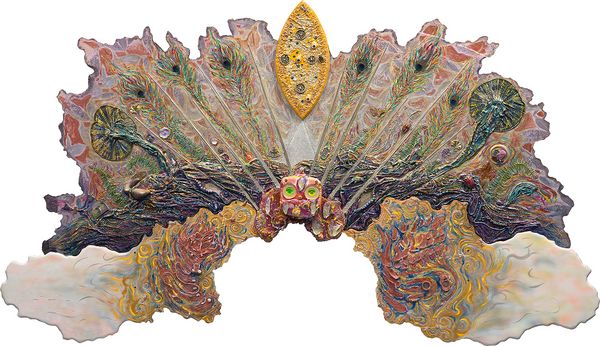
Ye Qin Zhu, Clouds of the Heart Sutra, 2024. Dialogues: PhillipsX + The Here & There Co.
P: How did you become involved with THAT Co., and how has the collective impacted your creative outlook?
YQZ: I became involved with THAT Co. in 2022 as their inaugural studio grantee. The timing was quite perfect. I was moving back to New York from New Haven, Connecticut, and desired a studio and community of artists. The studio turned out to be an 8-minute walk from my apartment, and the AAPI community in the arts has been welcoming and uplifting. The studio was exactly what I needed at the time, and the community has been a growing and supportive group. I am proud to be part of THAT Co.’s orbit. Their generosity has impacted my creative outlook in positive and hopeful ways.
Discover More from PhillipsX >
Recommended Reading
Artists on Our Radar in Seoul >
VOICES: Kirsten MacDonald in Conversation with Gertrud Oelsner >
